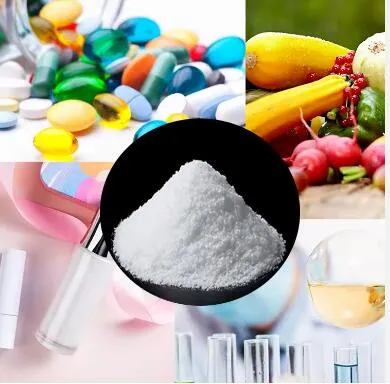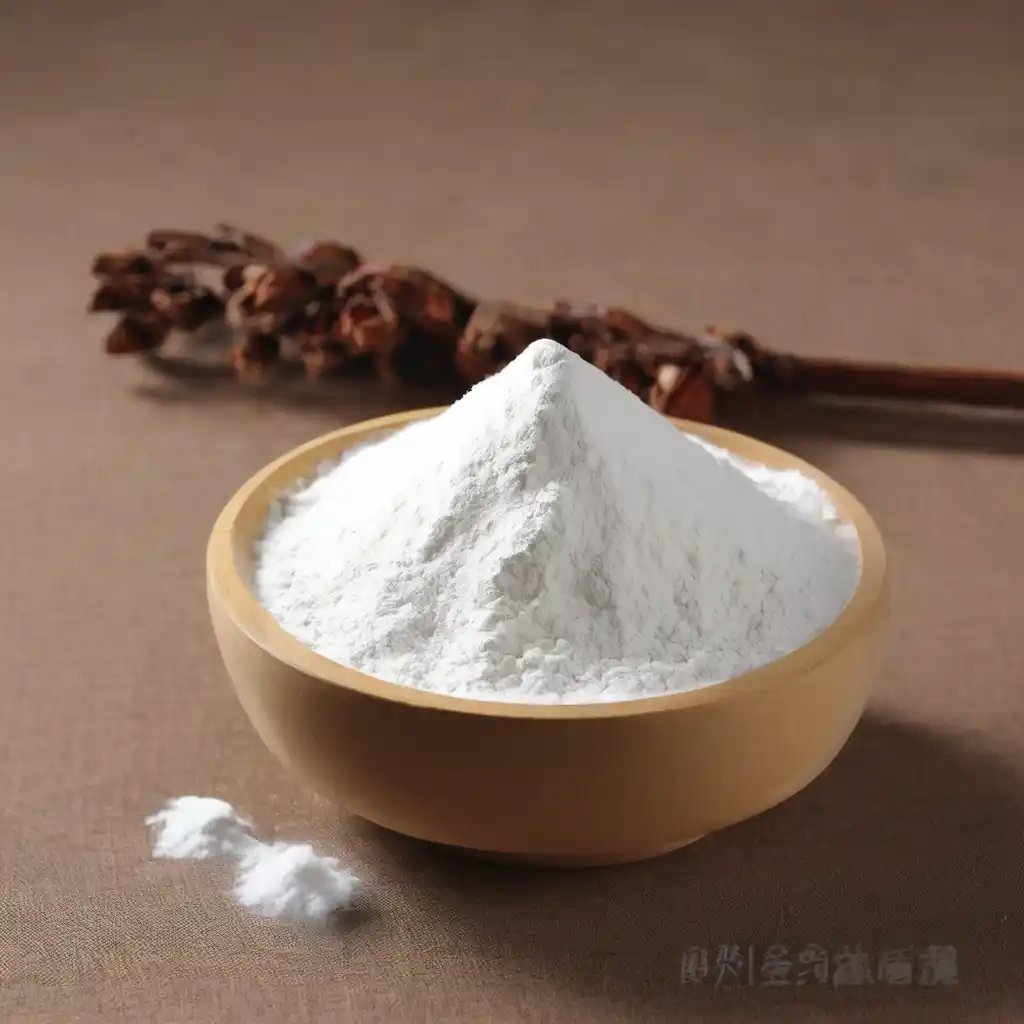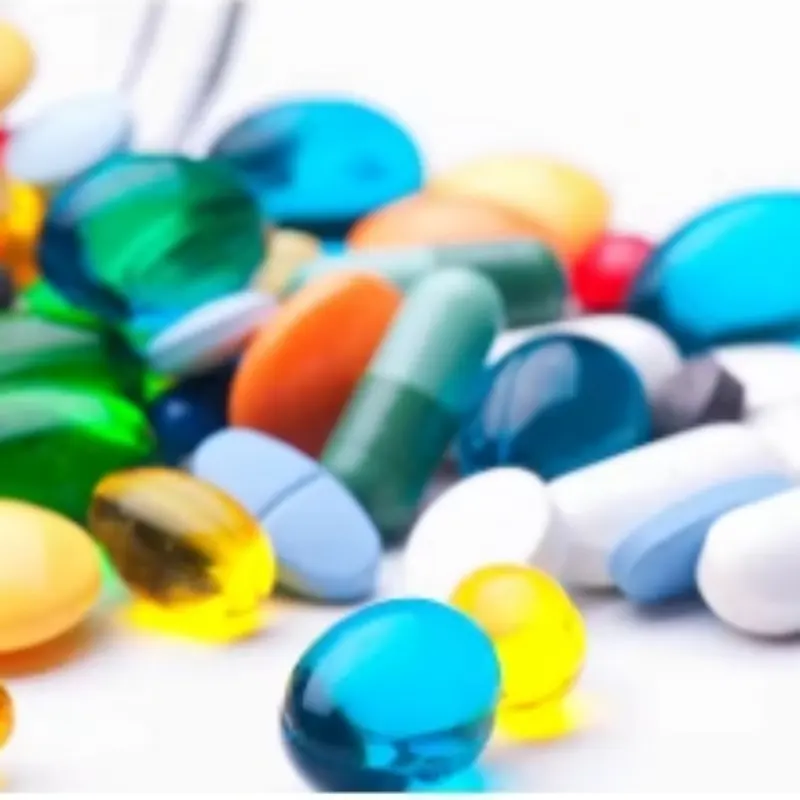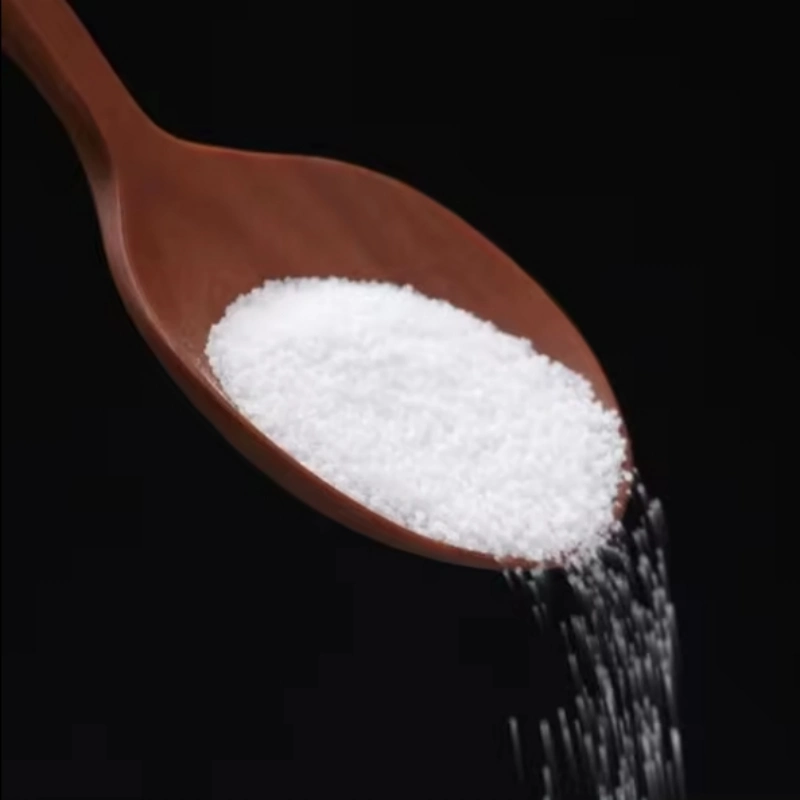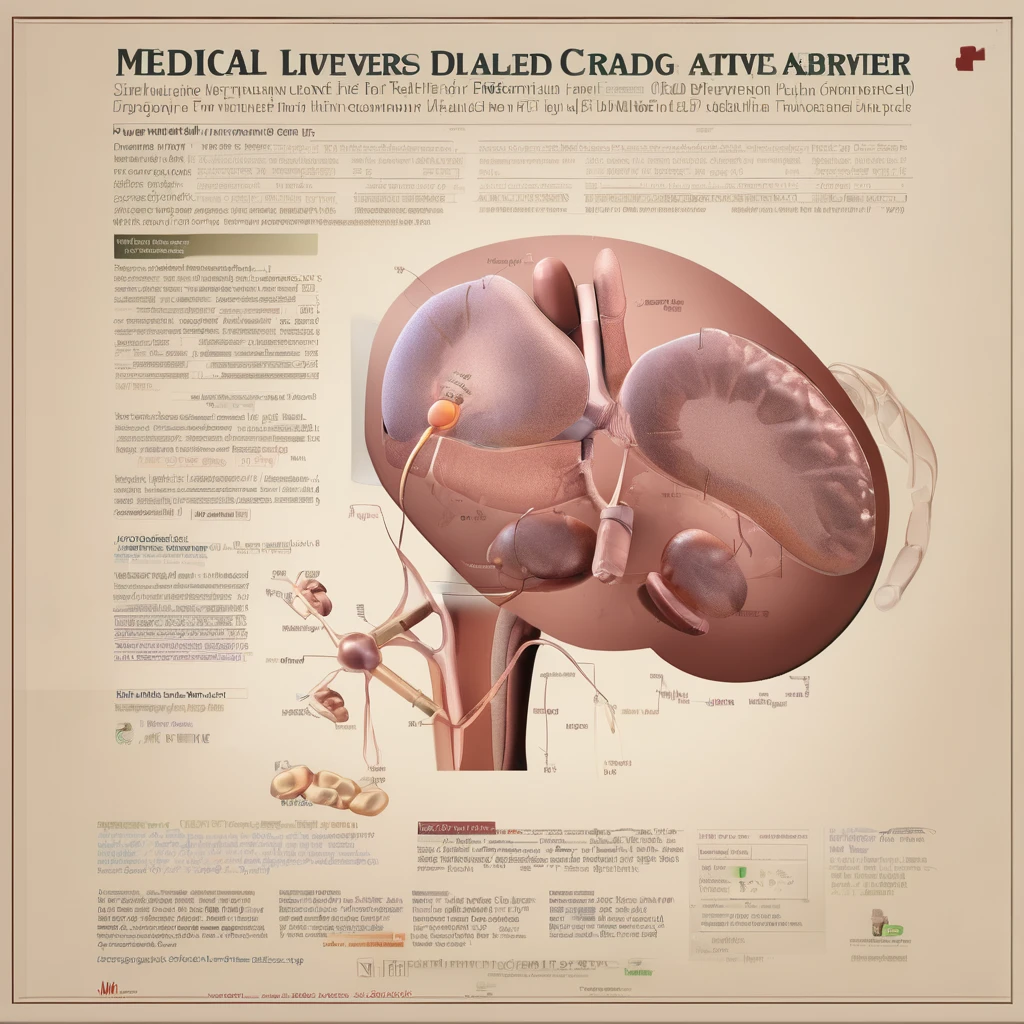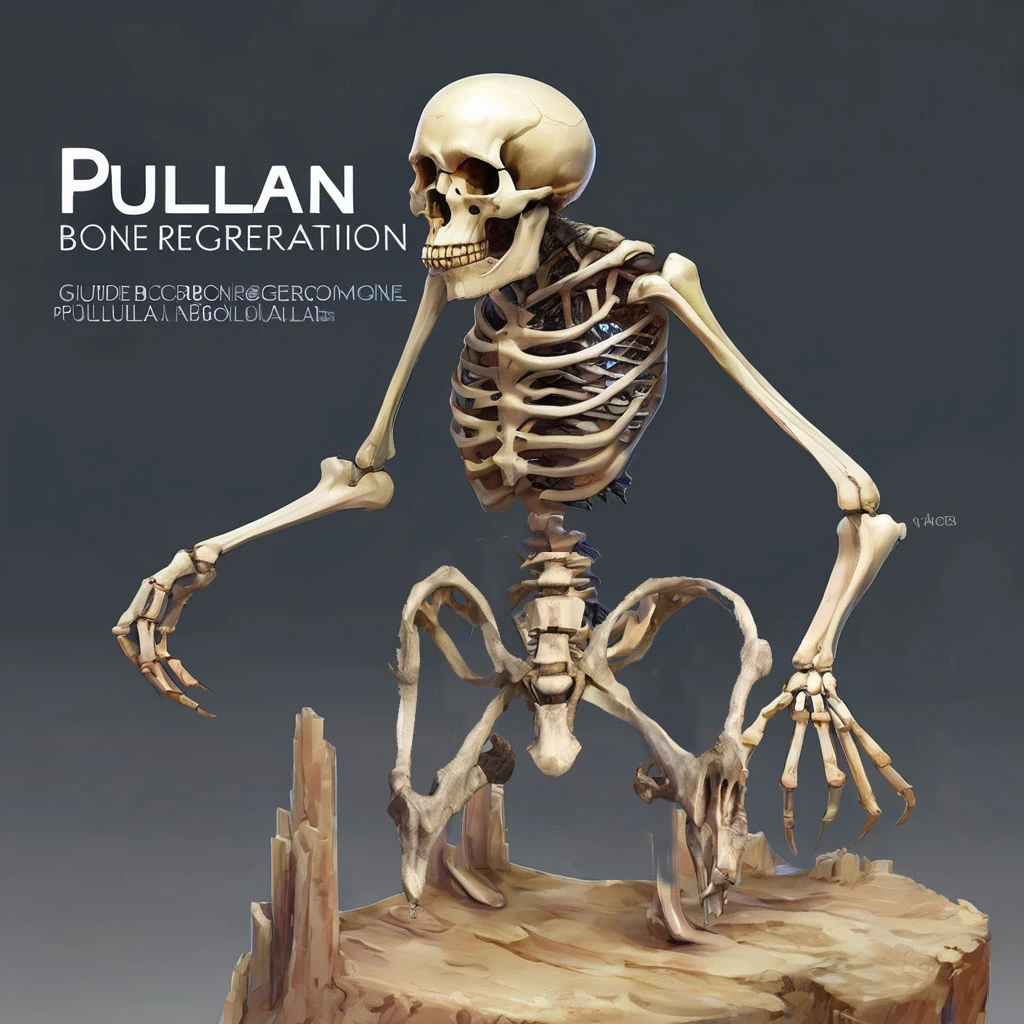Pullulan, a naturally occurring polysaccharide produced by the fungus Aureobasidium pullulans, has gained considerable attention in recent years due to its versatile applications in various industries. Among its many uses, one area where pullulan powder has shown remarkable potential is in pharmaceutical formulations.
1. Improved Drug Delivery Systems
One of the paramount challenges in the pharmaceutical industry lies in ensuring that drugs reach their intended targets within the body with precision and efficacy. The intricate balance between therapeutic effectiveness and minimizing systemic side effects is a constant pursuit. In this pursuit, pullulan powder has emerged as a highly promising excipient for innovative drug delivery systems. Its unique properties, including biocompatibility and the capacity to finely modulate drug release kinetics, make it an attractive choice for pharmaceutical formulations.
Pullulan-based drug delivery systems represent a paradigm shift in drug administration strategies. By encapsulating drugs within pullulan-based nanoparticles, researchers have unlocked the potential for precise and targeted drug delivery. These nanoparticles serve as carriers that ferry therapeutic agents directly to the site of action, bypassing non-target tissues and organs. This targeted approach not only enhances the efficacy of drugs but also mitigates the risk of systemic toxicity associated with conventional delivery methods.
A notable application of pullulan-based nanoparticles is in the targeted delivery of anticancer drugs. Cancer treatment often involves potent cytotoxic agents that indiscriminately attack both cancerous and healthy cells, leading to debilitating side effects. However, by encapsulating these drugs within pullulan nanoparticles, researchers have achieved remarkable advancements in cancer therapy. These nanoparticles can be engineered to selectively accumulate within tumor tissues, delivering high concentrations of drugs directly to cancer cells while sparing healthy surrounding tissues. This targeted approach not only enhances the therapeutic effects of anticancer drugs but also minimizes adverse reactions, thereby improving patient outcomes and quality of life.
Furthermore, the versatility of pullulan-based drug delivery systems extends beyond oncology. They hold promise for a wide range of therapeutic applications, including but not limited to cardiovascular diseases, infectious diseases, and neurological disorders. By harnessing the unique properties of pullulan, researchers can tailor drug delivery systems to meet the specific needs of diverse therapeutic interventions.
In addition to targeted delivery, pullulan-based drug delivery systems offer another significant advantage: controlled release kinetics. The ability to finely tune the rate and duration of drug release is crucial for optimizing therapeutic outcomes and patient compliance. Pullulan's inherent properties allow for precise control over drug release kinetics, enabling sustained and controlled delivery of therapeutic agents over extended periods. This sustained release profile not only maintains therapeutic concentrations of drugs within the body but also reduces the frequency of dosing, thereby enhancing patient convenience and adherence to treatment regimens.
Pullulan-based drug delivery systems represent a pioneering approach to pharmaceutical formulations. By leveraging pullulan's biocompatibility and unique physicochemical properties, researchers have unlocked new frontiers in targeted and controlled drug delivery. From improving the efficacy of anticancer therapies to advancing treatment options for various diseases, pullulan-based drug delivery systems hold immense promise for revolutionizing the field of pharmacotherapy and ultimately improving patient outcomes.
2. Stability Enhancement
Ensuring the stability of pharmaceutical formulations is paramount to preserving the efficacy, safety, and quality of drugs throughout their shelf life. Factors such as temperature variations, exposure to light, and interactions with packaging materials can all compromise the stability of drugs, leading to degradation and loss of potency. In this context, pullulan powder has emerged as a valuable tool for enhancing the stability of various pharmaceutical formulations, offering protection against degradation mechanisms and extending the shelf life of drugs.
Pullulan, a natural polysaccharide derived from microbial fermentation, possesses several properties that make it an ideal stabilizer for pharmaceutical formulations. Its biocompatibility, inertness, and film-forming capabilities render it suitable for a wide range of applications, particularly in protecting sensitive drugs from degradation.
One area where pullulan excels is in the stabilization of vaccines. Vaccines are biologics that contain live attenuated or inactivated pathogens, as well as adjuvants and stabilizers to enhance their stability and efficacy. Pullulan-based stabilizers have been successfully employed in vaccine formulations to safeguard the integrity of viral antigens and adjuvants, thereby preserving the vaccine's immunogenicity and potency. Studies have demonstrated that pullulan coatings can shield vaccine particles from environmental stressors, such as temperature fluctuations and exposure to light, thus maintaining their structural integrity and antigenic activity during storage and transportation.
Moreover, pullulan has shown promise in stabilizing protein-based therapeutics, which are susceptible to denaturation and aggregation under various stress conditions. Proteins, such as monoclonal antibodies and enzymes, are vital components of many biopharmaceutical products, but their stability poses significant challenges for formulation scientists. Pullulan-based stabilizers offer a protective barrier that shields protein molecules from detrimental interactions with solvents, surfaces, and other excipients, thereby preserving their native structure and biological activity. By minimizing protein aggregation and degradation, pullulan enhances the stability of protein-based therapeutics, prolonging their shelf life and ensuring consistent therapeutic efficacy.
In addition to vaccines and protein-based therapeutics, pullulan has been employed in the stabilization of small-molecule drugs, including oral solid dosage forms and parenteral formulations. Pullulan coatings can serve as protective barriers that prevent moisture ingress, oxidation, and chemical degradation, thereby maintaining the stability of drug molecules and extending their shelf life. Furthermore, pullulan's film-forming properties allow for the development of enteric coatings and sustained-release matrices, enabling controlled drug release and targeted delivery within the body.
Pullulan powder offers a versatile and effective solution for enhancing the stability of pharmaceutical formulations across diverse drug classes. Whether protecting vaccines from environmental stressors, stabilizing protein-based therapeutics, or preserving the potency of small-molecule drugs, pullulan-based stabilizers play a crucial role in ensuring the quality and efficacy of pharmaceutical products. As research in this field continues to advance, pullulan is poised to remain a valuable tool for formulation scientists seeking to optimize the stability and shelf life of drugs, ultimately benefiting patients worldwide.
3. Mucoadhesive Formulations
Mucoadhesive formulations represent a versatile approach to drug delivery, particularly for medications intended for mucosal administration, such as nasal sprays, buccal tablets, and vaginal gels. These formulations adhere to the mucosal surfaces, including those found in the oral cavity, nasal passages, gastrointestinal tract, and other anatomical sites, prolonging the residence time of drugs and facilitating their absorption into systemic circulation. Pullulan powder, with its inherent mucoadhesive properties, has emerged as a promising excipient for developing such formulations, offering several advantages in terms of drug delivery efficiency and patient compliance.
The mucoadhesive properties of pullulan powder stem from its ability to form hydrogen bonds with mucin molecules present in the mucus layer that overlays mucosal surfaces. This adhesive interaction allows pullulan-based formulations to adhere firmly to the mucosal epithelium, resisting the forces of saliva, mucociliary clearance, and peristalsis. By anchoring the drug delivery system to the mucosal membrane, pullulan prolongs the contact time between the drug and the absorption site, thereby enhancing drug absorption and bioavailability.
One notable application of pullulan-based mucoadhesive formulations is in the development of buccal drug delivery systems. Buccal administration offers several advantages, including avoidance of first-pass metabolism, rapid onset of action, and ease of administration. However, the buccal mucosa presents challenges in terms of drug permeability and retention. Pullulan-based mucoadhesive patches address these challenges by providing a sustained-release platform that adheres to the buccal mucosa, allowing for controlled drug release and absorption over an extended period. These patches not only improve patient compliance by eliminating the need for frequent dosing but also enhance the therapeutic efficacy of drugs by maintaining steady plasma concentrations.
Furthermore, pullulan-based mucoadhesive formulations have been explored for nasal drug delivery, where they offer advantages such as improved nasal residence time and enhanced drug absorption across the nasal mucosa. Nasal sprays and gels containing pullulan exhibit prolonged retention within the nasal cavity, allowing for efficient drug uptake through the highly vascularized nasal epithelium. This route of administration is particularly advantageous for drugs intended for systemic absorption, as it bypasses the gastrointestinal tract and avoids hepatic first-pass metabolism.
In addition to buccal and nasal delivery, pullulan-based mucoadhesive formulations hold promise for other mucosal routes, including ocular, vaginal, and rectal administration. By harnessing the mucoadhesive properties of pullulan, researchers can tailor drug delivery systems to suit the specific requirements of different anatomical sites, thereby expanding the scope of mucosal drug delivery applications.
Pullulan powder serves as a valuable platform for developing mucoadhesive formulations that enhance drug delivery through mucosal routes. By prolonging the residence time of drugs at the site of application, pullulan-based formulations improve drug absorption, bioavailability, and therapeutic efficacy. As research in this field continues to advance, pullulan-based mucoadhesive formulations are poised to play a significant role in optimizing drug delivery strategies and improving patient outcomes.
4. Film Coatings and Encapsulation
Film coatings and encapsulation are essential techniques employed in the pharmaceutical industry to protect drug substances, enhance stability, control release kinetics, and improve patient compliance. Pullulan powder, a natural polysaccharide with excellent film-forming properties, has garnered significant interest as a coating material and encapsulating agent due to its biocompatibility, versatility, and ability to modulate drug release profiles.
Pullulan-based film coatings serve as a protective barrier that shields the encapsulated drug from external factors such as moisture, oxygen, light, and chemical degradation. These coatings effectively prevent the degradation of sensitive drug substances, thereby extending their shelf life and maintaining their potency. Moreover, pullulan's film-forming properties allow for the formation of uniform and smooth coatings on pharmaceutical tablets, capsules, pellets, and granules, enhancing their aesthetic appeal and swallowability.
In addition to providing a protective barrier, pullulan-based coatings offer the advantage of controlled drug release. By adjusting the composition and thickness of the pullulan film, researchers can precisely modulate the rate and extent of drug release from the dosage form. This tunability enables the development of extended-release formulations that deliver drugs in a sustained manner over an extended period, thereby reducing dosing frequency and improving patient compliance. Furthermore, pullulan coatings can be tailored to achieve specific release profiles, such as immediate release, delayed release, or pulsatile release, to meet the therapeutic needs of different drugs and patient populations.
Pullulan-based encapsulation is another valuable application in pharmaceutical formulations, particularly for encapsulating drug substances in microspheres, nanoparticles, or liposomes. Pullulan serves as an effective encapsulating agent due to its biocompatibility, inertness, and ability to form stable complexes with drugs. Pullulan encapsulation provides several advantages, including enhanced stability, improved bioavailability, controlled release, and targeted delivery of drugs to specific sites within the body. Moreover, pullulan encapsulated drug delivery systems offer protection against enzymatic degradation, pH fluctuations, and other physiological barriers encountered in the gastrointestinal tract, thereby improving the therapeutic efficacy of orally administered drugs.
One of the notable applications of pullulan-based encapsulation is in the development of targeted drug delivery systems. By functionalizing pullulan nanoparticles with targeting ligands, such as antibodies, peptides, or aptamers, researchers can achieve selective accumulation of drugs at the site of action, minimizing off-target effects and enhancing therapeutic outcomes. This targeted approach is particularly advantageous for cancer therapy, where precise drug delivery to tumor tissues is essential for maximizing efficacy while minimizing systemic toxicity.
Pullulan powder plays a pivotal role in film coatings and encapsulation in the pharmaceutical industry, offering a versatile and effective platform for protecting, stabilizing, and delivering drug substances. Whether as a protective coating on solid dosage forms or as an encapsulating agent in drug delivery systems, pullulan offers numerous advantages in terms of stability enhancement, controlled release, and targeted delivery. As research in this field continues to advance, pullulan-based film coatings and encapsulation technologies are poised to contribute significantly to the development of safer, more effective, and patient-friendly pharmaceutical formulations.
5. Clinical Applications
The clinical significance of pullulan-based pharmaceutical formulations extends beyond traditional drug delivery systems and encapsulation techniques. Pullulan's unique properties make it an attractive material for use in various medical devices and implants, as well as in tissue engineering applications. From enhancing biocompatibility to facilitating tissue regeneration, pullulan-based formulations hold immense promise in advancing clinical therapies and improving patient outcomes.
(1). Coatings for Implantable Medical Devices:
Pullulan coatings have been widely employed in the fabrication of implantable medical devices, such as stents, catheters, and prosthetic implants. These coatings serve multiple purposes, including reducing thrombogenicity, enhancing biocompatibility, and preventing tissue adhesion. By applying pullulan coatings to the surface of medical devices, researchers can create a biocompatible barrier that minimizes the risk of adverse reactions and improves the long-term performance of implants within the body. Moreover, pullulan coatings can be engineered to release bioactive agents, such as antimicrobial agents or growth factors, to further enhance device functionality and tissue integration.
(2). Hydrogels for Tissue Engineering:
Pullulan-based hydrogels have emerged as promising scaffolds for tissue engineering and regenerative medicine applications. Hydrogels are three-dimensional networks of crosslinked polymers that can absorb and retain large amounts of water, mimicking the native extracellular matrix (ECM) found in biological tissues. Pullulan's biocompatibility, biodegradability, and tunable mechanical properties make it an ideal candidate for developing hydrogel scaffolds for tissue regeneration. Pullulan-based hydrogels can be loaded with bioactive molecules, such as growth factors or cells, to promote tissue growth, angiogenesis, and wound healing. These hydrogels can be tailored to match the specific properties of various tissues, making them suitable for applications ranging from cartilage repair to wound dressings.
(3). Drug-Eluting Implants:
In addition to their role as coatings for medical devices, pullulan-based formulations have been explored for the development of drug-eluting implants. Drug-eluting implants are implantable devices that release therapeutic agents locally over an extended period, offering targeted treatment and minimizing systemic side effects. Pullulan coatings can be used to encapsulate drugs or growth factors within implantable matrices, allowing for controlled release kinetics and sustained therapeutic effects. By incorporating pullulan into the design of drug-eluting implants, researchers can improve the biocompatibility, stability, and efficacy of these devices, paving the way for novel treatments in areas such as orthopedics, cardiology, and oncology.
(4). Wound Healing and Tissue Regeneration:
Pullulan-based formulations have shown promise in promoting wound healing and tissue regeneration. Pullulan hydrogels can serve as scaffolds for cell encapsulation and delivery, providing a supportive environment for tissue repair and regeneration. Additionally, pullulan coatings applied to wound dressings can create a protective barrier that enhances wound closure, reduces inflammation, and prevents infection. By harnessing the regenerative properties of pullulan, researchers aim to develop innovative therapies for chronic wounds, burns, and tissue defects, ultimately improving patient outcomes and quality of life.
Pullulan-based pharmaceutical formulations hold significant clinical potential in various medical applications, including coatings for implantable devices, hydrogels for tissue engineering, drug-eluting implants, and wound healing. By leveraging pullulan's unique properties, researchers can develop advanced therapies that improve biocompatibility, promote tissue regeneration, and enhance patient care across diverse medical specialties.
Conclusion
Pullulan powder holds immense promise in pharmaceutical formulations, offering a range of benefits including improved drug delivery, stability enhancement, mucoadhesion, and controlled release. With ongoing research and development efforts, the applications of pullulan in the pharmaceutical industry are expected to expand further, contributing to advancements in drug delivery and patient care.
Supplying of pullulan powder
We are a leading manufacturer of premium pullulan powder, committed to delivering high-quality products to customers worldwide. Our pullulan powder is meticulously produced to meet the stringent standards of the pharmaceutical industry, ensuring purity, consistency, and superior performance. With a global distribution network, we provide reliable supply solutions to meet the diverse needs of our clients across the globe.
Product Parameters
Test Parameter | Unit | Specification |
Destription | Pullulan | white powder |
Viscosity (10% solution, 30℃) | mm²/s | 15-180 |
Residue on ignition | w/% | ≤1.0 |
PH | mol/L | 5.0~8.0 |
Loss of drying | w/% | ≤10 |
Assay ( content of Mono-,di-,oligosaccharides ) | w/% | ≤10 |
Nitrogen Determination | w/% | ≤0.05 |
Heavy Metals | PPM | ≤10 |
Total aerobic microbial count | CFU/g | ≤100 |
Total Yeast/mold count | CFU/g | ≤100 |
Escherichia coli | MPN/g | Negative |
References:
1. Li, J., Zhang, J., Wang, X., Kawazoe, N., & Chen, G. (2013). Gold nanorods in photothermal therapy, as drug carriers, and in vitro drug release. ACS Applied Materials & Interfaces, 5(20), 10381-10388.
2. Li, X., Anton, N., & Vandamme, T. F. (2010). Polymeric nano/microcapsules of liquid active agents for oral drug delivery. Journal of Controlled Release, 148(1), 2-13.
3. Smart, J. D. (2005). The basics and underlying mechanisms of mucoadhesion. Advanced Drug Delivery Reviews, 57(11), 1556-1568.
4. Zhang, Y., Zhu, J., Yin, C., & Li, W. (2015). Advanced polyelectrolyte materials for the fabrication of layer-by-layer assembly nano-drug delivery systems. Colloids and Surfaces B: Biointerfaces, 135, 55-61.
5. Pant, H. R., Neupane, M. P., Panthi, G., Pant, B., & Oh, H. J. (2014). Fabrication of pullulan/poly (lactic acid) blend films and evaluation of their characteristics for stent coating applications. Journal of Industrial and Engineering Chemistry, 20(5), 3641-3647.
6. Jayakumar, R., Menon, D., Manzoor, K., Nair, S. V., & Tamura, H. (2010). Biomedical applications of chitin and chitosan based nanomaterials—a short review. Carbohydrate polymers, 82(2), 227-232.
7. Vela Ramirez, J. E., & Roychoudhury, R. (2018). Habitable polysaccharide-based formulations for stabilization and delivery of protein vaccines. Journal of Pharmaceutical Sciences, 107(2), 319-330.
8. Cleland, J. L., & Jones, A. J. S. (2016). Stabilization of proteins and peptides for therapeutic delivery. In Formulation and Delivery of Proteins and Peptides (pp. 169-188). Elsevier.
9. Dharani, S., & Charyulu, R. N. (2018). Pullulan: An overview of properties, applications and recent developments. Carbohydrate Polymers, 195, 334-349.
10. Illum, L. (2003). Nasal drug delivery—possibilities, problems and solutions. Journal of Controlled Release, 87(1-3), 187-198.
11. Boateng, J. S., Matthews, K. H., & Stevens, H. N. (2008). Eccleston GM. A comparative study of the potential of solid triglyceride nanostructures coated with chitosan or pluronic F127 as platforms for the oral delivery of drugs. International Journal of Pharmaceutics, 7; 355(1-2): 108-16.
12. Zhang, X., & Yang, L. (2014). Design of nanomaterial-based systems for novel vaccine development. Wiley Interdisciplinary Reviews: Nanomedicine and Nanobiotechnology, 6(5), 445-457.
13. Wang, Q., Zhuang, X., & Deng, W. (2017). Pullulan-based nanoparticles as drug delivery systems. Polymer Journal, 49(6), 627-635.
14. Laffleur, F., & Bernkop-Schnürch, A. (2018). Strategies for overcoming the limited stability of pullulan capsules under acidic conditions. European Journal of Pharmaceutics and Biopharmaceutics, 130, 20-27.
15. Costa, R. R., Mano, J. F., & Weng, L. T. (2020). Pullulan-based nanoparticles for drug delivery to the central nervous system. Nanomaterials, 10(9), 1777.
16. Soppimath, K. S., & Aminabhavi, T. M. (2002). Biodegradable polymeric nanoparticles as drug delivery devices. Journal of Controlled Release, 70(1-2), 1-20.
17. Gupta, P., Vermani, K., & Garg, S. (2002). Hydrogels: from controlled release to pH-responsive drug delivery. Drug Discovery Today, 7(10), 569-579.
18. Nguyen, Q. V., Huynh, D. P., & Park, J. S. (2020). Pullulan-based hydrogels: Synthesis, properties, and biomedical applications. Carbohydrate Polymers, 229, 115460.
